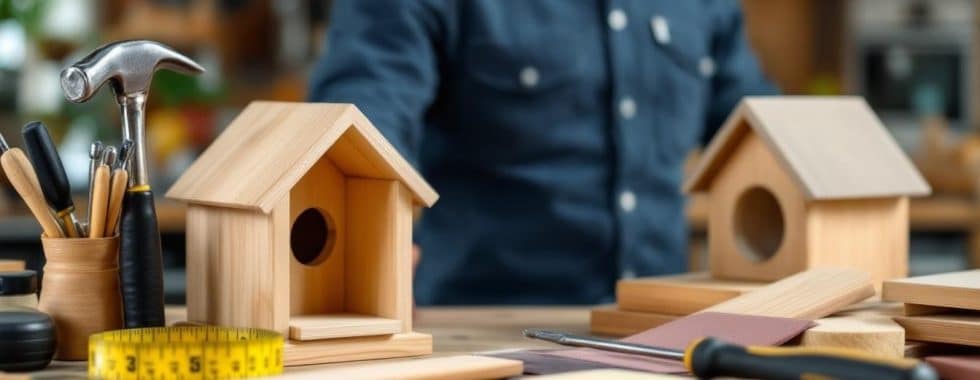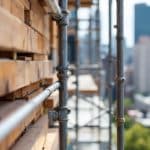DIY and Home Improvement Ideas for Every Homeowner
Home improvement projects can transform your living space while building valuable skills and saving money. DIY and home improvement work ranges from simple weekend tasks to complex renovations that require professional expertise.
We at Cameron Construction believe every homeowner can tackle meaningful projects with the right knowledge and preparation. This guide covers budget-friendly upgrades, essential tools, and when to call in the pros.
Budget-Friendly DIY Projects That Add Value
Smart homeowners focus on three high-impact areas that deliver exceptional returns without breaking the bank. Paint projects remain the most cost-effective upgrade, with interior jobs costing $60-100 per square metre and exterior work around $40-70 per square metre. The National Association of Realtors confirms that fresh paint can increase home value by up to 5%, which makes it the strongest ROI project available. Choose neutral colours like warm whites or soft greys for maximum appeal, and paint your front door a bold colour to boost curb appeal instantly.
Kitchen Cabinet Transformations
Cabinet refacing costs 30-50% less than full replacement while it delivers similar visual impact. Replace cabinet doors with painted MDF versions for $200-400 per linear metre, then add modern hardware like brushed gold or matte black handles for $8-15 each. This combination transforms dated kitchens for under $3,000 (compared to $20,000+ for complete renovations). Paint existing cabinet frames with high-quality primer and semi-gloss paint to match new doors perfectly.
Strategic Outdoor Improvements
Landscaping delivers 70% ROI according to recent Australian renovation data. Plant native perennials for $15-25 each to create year-round colour without ongoing maintenance costs. Add mulch at $45 per cubic metre to suppress weeds and retain moisture. Install solar pathway lights for $25-40 each to extend outdoor enjoyment into evening hours. These improvements cost under $1,500 but can increase property value by $3,000-5,000 while they reduce water bills through drought-resistant plant choices.
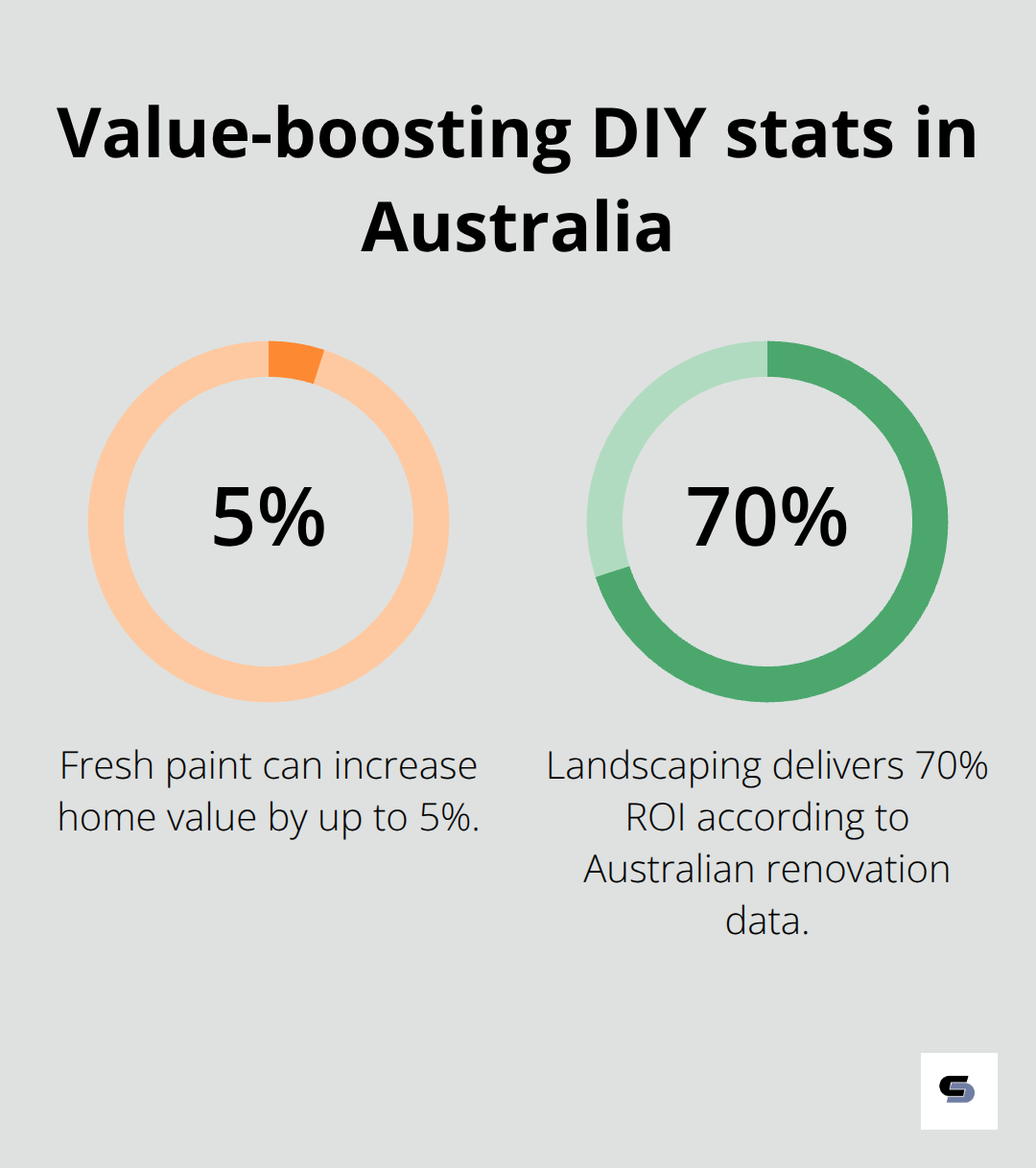
Simple Interior Updates
Crown moulding installation takes one weekend and costs $8-12 per linear metre for basic profiles. This upgrade gives rooms a finished, professional appearance that buyers notice immediately. Replace light fixtures with modern alternatives ($50-200 each) to update any space instantly. Add under-cabinet LED strips in kitchens for $30 per three-pack to create ambient lighting that makes spaces feel larger and more inviting.
Success with these projects requires the right tools and materials to achieve professional results.
Essential Tools and Materials for Home Improvement
Professional results demand the right equipment, but beginners often waste money on unnecessary gadgets. A quality cordless drill with 18V minimum power handles 90% of DIY tasks and costs $150-250 from brands like Makita or DeWalt. Add a circular saw for $200-300 to cut timber and plywood accurately. These two tools complete most cabinet refacing, shelving installation, and basic carpentry projects. Skip cheap alternatives that break after six months – invest in professional-grade tools that last decades.
Power Tools That Handle Most Projects
Cordless impact drivers deliver more torque than standard drills and drive screws without stripping heads. Models with brushless motors run 40% longer per battery charge and cost $180-280. A reciprocating saw cuts through walls, pipes, and timber for demolition work at $120-200. Orbital sanders smooth surfaces faster than hand sanding and produce consistent finishes for $80-150. These four tools tackle 95% of home improvement tasks without the expense of specialty equipment.
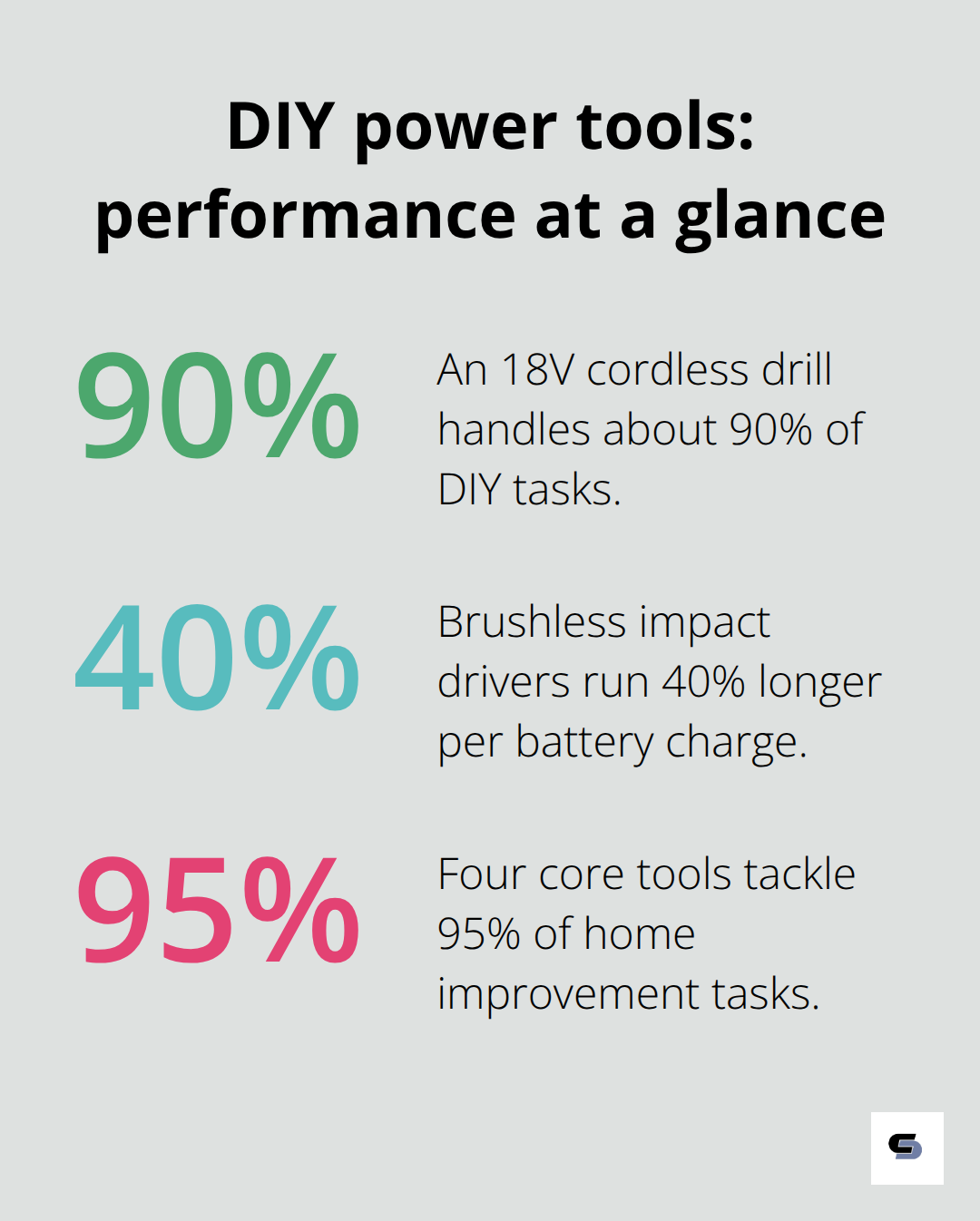
Materials That Determine Project Success
Primer makes the difference between paint that chips in six months versus finishes that last five years. Zinsser Bulls Eye 1-2-3 at $45 per gallon bonds to any surface and blocks stains permanently. For cabinet hardware, solid brass handles cost $12-18 each but never tarnish or break, while zinc-plated alternatives fail within two years. Choose 18-gauge brad nails for trim work instead of 23-gauge pins that pull out easily. Quality caulk like Sikaflex costs $8 per tube versus $3 generics, but stays flexible for 20 years without cracking.
Safety Equipment That Prevents Injuries
Safety glasses are essential protection equipment, yet only 40% of homeowners wear them consistently. Impact-rated glasses cost $15-25 and protect against debris from power tools. Respirator masks with P2 filters protect the wearer from inhaling hazardous particles like dust and smoke – essential for sanding or demolition work at $35-50 each. Work gloves reduce hand injuries by 70%, but choose cut-resistant versions for $25-40 rather than basic cotton types that offer minimal protection.
Smart Storage Solutions
Tool organisation saves time and prevents damage to expensive equipment. Rolling tool chests with multiple drawers cost $200-400 but keep everything accessible and secure. Wall-mounted pegboards display frequently used tools and cost under $50 to install. Plastic storage bins (labelled clearly) organise small hardware like screws, anchors, and electrical components for quick retrieval during projects.
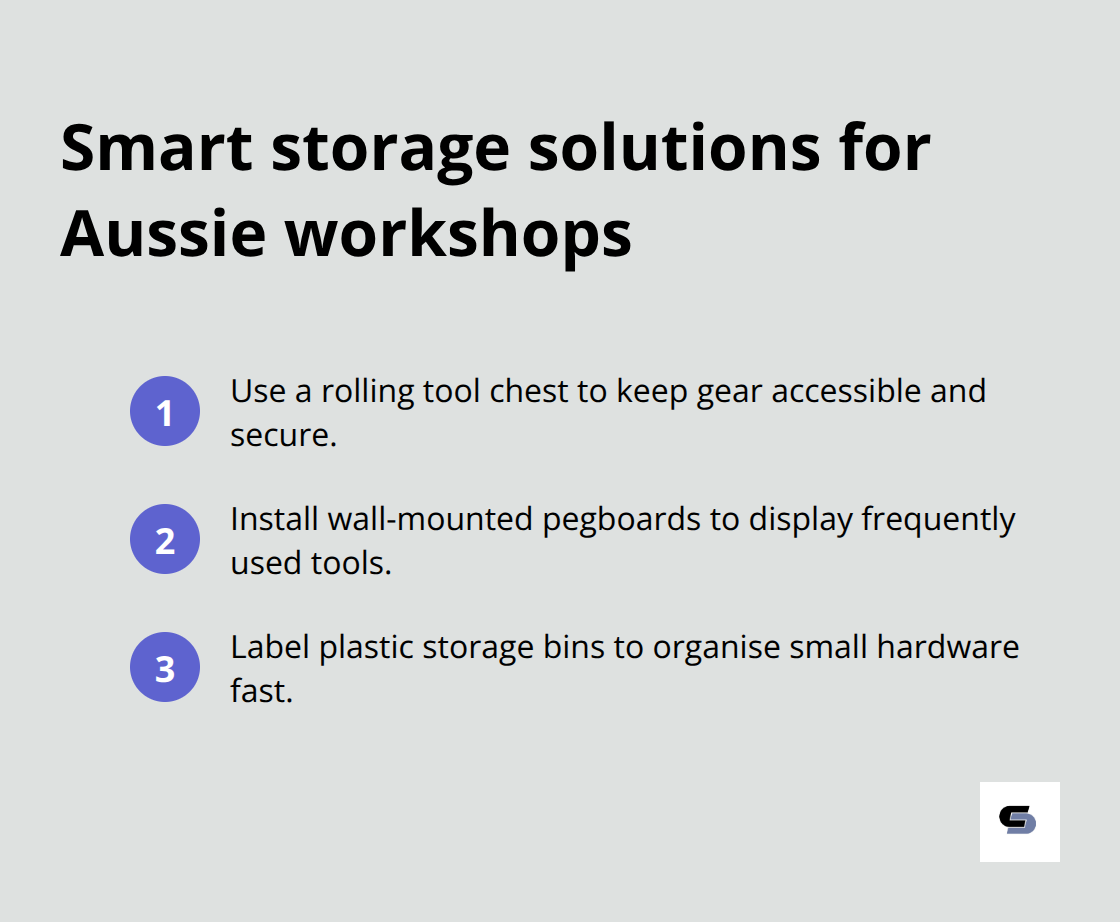
Even with the right tools and materials, some projects require professional expertise to avoid costly mistakes and safety hazards. Proper planning and budget management ensure successful completion of larger renovation projects.
When to DIY vs When to Hire Professionals
DIY projects save money, but homeowners who attempt the wrong tasks create expensive disasters and safety hazards. The Australian Building Codes Board require licensed professionals for any electrical work that involves new circuits or panel modifications, with fines of $160 per penalty unit for individuals or $810 for companies. Gas line modifications require certified technicians due to explosion risks that can devastate entire neighbourhoods.
Safe DIY Projects for Weekend Warriors
Cosmetic updates like tile paint application, fixture replacement, and trim installation pose minimal risk when mistakes occur. These projects typically cost under $500 in materials and take one weekend to complete. Interior paint jobs, hardware swaps, and basic landscape improvements fall into this safe category perfectly.
Homeowners can tackle floor installation with click-together planks or tiles (patience becomes the main requirement rather than special skills). Window treatment installation and basic storage solutions also suit DIY approaches without legal complications. Cabinet hardware replacement transforms kitchens for under $200 while simple shelving installation adds storage without structural concerns.
Complex Projects That Demand Professional Skills
Structural wall removal, electrical panel upgrades, and major plumbing relocations require professional licences for good reason. These projects involve strict codes, safety regulations, and insurance requirements that DIYers cannot navigate legally. Kitchen renovations that involve gas line modifications, electrical upgrades for new appliances, and bathroom renovations that require waterproofing membrane installation need professional oversight.
Roofing work beyond simple gutter maintenance presents fall hazards, with building & plumbing labourers reporting the most fatalities (18) over 12 years, mostly from falling from roofs. Foundation repairs, HVAC installation, and any work that requires permits should always go to licensed professionals who carry proper insurance coverage.
Safety and Code Compliance Considerations
Licensed contractors understand local codes and obtain necessary permits automatically. They carry liability insurance that protects homeowners from accidents and property damage during construction. Professional work comes with warranties that cover defects and failures for years after completion.
DIY electrical mistakes cause house fires, while improper plumbing creates water damage that costs thousands to repair. Structural modifications without proper engineering can compromise home stability and void insurance policies completely.
Final Thoughts
Successful DIY and home improvement projects start with honest assessment of your skills and available time. Start with simple paint jobs or hardware updates that build confidence before you attempt complex renovations. Set realistic budgets that include 20% extra for unexpected costs, as 40% of homeowners exceed their initial estimates.
Smart homeowners combine DIY efforts with professional expertise strategically. Handle cosmetic updates, basic installations, and maintenance tasks yourself while you leave electrical, plumbing, and structural work to licensed contractors. This approach maximises savings without it compromises safety or code compliance.
Create detailed plans, gather quality tools, and research local permit requirements before you start your next project. Focus on high-impact areas like kitchens and bathrooms that deliver strong returns on investment (even small improvements like fresh paint or new fixtures can transform your living space significantly). For complex renovations that need professional oversight, Cameron Construction brings decades of Melbourne experience to every project.

